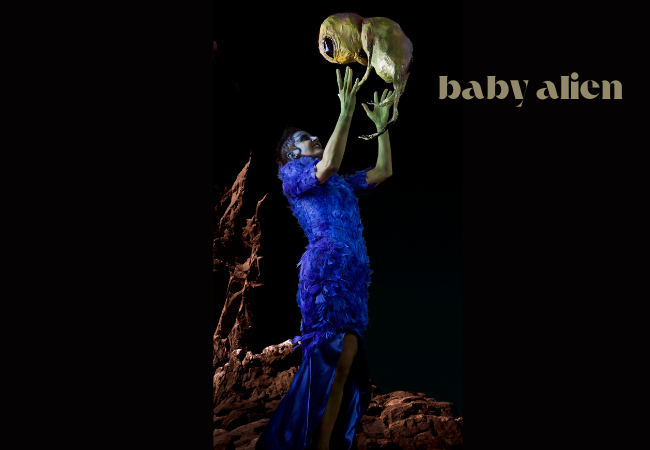Baby Alien: Unraveling the Mysteries

The concept of baby aliens has captivated the imagination of many for decades. Whether it’s through science fiction, folklore, or modern-day sightings, these tiny extraterrestrial beings evoke a sense of wonder and curiosity. This article delves deep into the mysterious world of baby aliens, exploring their origins, characteristics, and the impact they have had on both science and popular culture.
Origin of Baby Aliens
Theories on Extraterrestrial Life
The origin of baby aliens is often linked to broader theories about extraterrestrial life. Scientists and researchers have long pondered the possibility of life beyond Earth. The famous Drake Equation, for instance, attempts to estimate the number of civilizations in our galaxy with which we might communicate. While many theories suggest the existence of advanced civilizations, the idea of baby aliens introduces a more intimate and relatable aspect of alien life.
First Sightings and Reports
Historically, reports of baby aliens have been rare compared to sightings of their adult counterparts. However, there have been notable instances where witnesses have described encounters with small, child-like extraterrestrials. These reports often come from individuals who claim to have been abducted or who have witnessed UFO landings. Despite skepticism, these stories contribute to the rich tapestry of UFO lore.
Scientific Evidence
The search for scientific evidence of baby aliens is ongoing. Researchers rely on advanced technology, such as powerful telescopes and space probes, to explore distant planets and moons. While direct evidence of baby aliens remains elusive, the discovery of extremophiles—organisms that thrive in extreme conditions on Earth—suggests that life could exist in similar environments elsewhere in the universe.
Physical Characteristics of Baby Aliens
Anatomy and Physiology
Descriptions of baby aliens vary widely, but common themes emerge. They are often depicted as small beings with large heads, oversized eyes, and slender bodies. These features are thought to be adaptations to their environment, possibly allowing for greater cognitive abilities and sensory perception. Some theories suggest that their physiology could be adapted to lower gravity or different atmospheric compositions.
Distinctive Features
In addition to their general anatomy, baby aliens are often characterized by unique features. These might include bioluminescent skin, the ability to change color, or other adaptations not seen in terrestrial life forms. These distinctive traits not only make baby aliens fascinating but also fuel speculation about their origins and abilities.
Habitats and Environments
Alien Worlds and Ecosystems
Baby aliens are imagined to inhabit a variety of alien worlds, each with its own unique ecosystem. From icy moons like Europa to potentially habitable exoplanets in distant star systems, the potential habitats for baby aliens are as diverse as the universe itself. Understanding these environments helps scientists theorize about the types of adaptations baby aliens might have developed to survive.
Adaptations for Survival
Survival in alien environments likely requires significant adaptations. Baby aliens might possess specialized respiratory systems for different atmospheres, or perhaps they have developed resistance to extreme temperatures and radiation. These adaptations would be crucial for their survival and could provide insights into the resilience and versatility of life.
Communication and Behavior
Communication Methods
The ways in which baby aliens might communicate are a topic of great interest. Possibilities range from telepathy to advanced vocalizations or even bioluminescent signals. Understanding these methods could offer new perspectives on non-verbal communication and the complexities of alien languages.
Social Structures
The social structures of baby aliens are another area ripe for exploration. Do they live in close-knit family units, or are they part of larger, communal societies? Insights into their social behavior could shed light on their values, traditions, and daily lives.
Cultural Impact of Baby Aliens
Influence on Media and Entertainment
Baby aliens have had a significant impact on media and entertainment. From movies like “E.T. the Extra-Terrestrial” to TV shows and video games, these small extraterrestrial beings have captured the hearts of audiences worldwide. Their portrayal ranges from friendly and curious to mysterious and enigmatic, reflecting our fascination with the unknown.
Representation in Art and Literature
In art and literature, baby aliens are often depicted in various forms, symbolizing innocence, curiosity, and the possibility of a broader universe. They inspire artists and writers to explore themes of discovery, connection, and the unknown, enriching our cultural landscape with their presence.
Baby Aliens in Popular Culture
Famous Baby Alien Characters
Many beloved baby alien characters have become icons in popular culture. Characters like Baby Yoda from “The Mandalorian” have achieved near-legendary status, demonstrating the enduring appeal of these otherworldly beings. Their stories often explore themes of growth, learning, and the bond between humans and aliens.
Merchandise and Collectibles
The popularity of baby aliens has also led to a thriving market for merchandise and collectibles. From action figures to clothing, these items allow fans to celebrate their favorite extraterrestrial characters and bring a piece of the cosmos into their everyday lives.
Scientific Research on Baby Aliens
Ongoing Studies and Discoveries
Scientists continue to explore the possibility of extraterrestrial life through various research initiatives. Projects like the Search for Extraterrestrial Intelligence (SETI) and the study of extremophiles provide valuable data that could one day confirm the existence of baby aliens. These studies push the boundaries of our knowledge and keep the search for alien life at the forefront of scientific inquiry.
Contributions to Astrobiology
The study of baby aliens contributes to the broader field of astrobiology, which examines the potential for life in the universe. By considering how life might evolve under different conditions, researchers gain insights into the diversity and resilience of life, expanding our understanding of biology and the potential for discovery.
Technology and Baby Aliens
Advanced Alien Technology
The idea that baby aliens possess advanced technology is a common theme in science fiction. Imagining their technological advancements allows us to speculate about the future of human innovation. From energy sources to transportation, the technologies attributed to baby aliens could inspire real-world scientific breakthroughs.
Human Integration of Alien Tech
The integration of alien technology into human society is another intriguing concept. If we were to discover baby aliens and their technology, how would it impact our world? This question explores the ethical, social, and technological implications of such a discovery, challenging us to think about the future of humanity.
Baby Alien Phenomena
Paranormal Encounters
Paranormal encounters with baby aliens are a fascinating aspect of their lore. These encounters, often reported by individuals who claim to have been visited or abducted, add an element of mystery and intrigue. While many remain skeptical, the stories contribute to a broader understanding of human experiences with the unknown.
Government Investigations
Governments around the world have conducted investigations into UFO sightings and potential alien encounters. These investigations often involve significant resources and have sometimes led to the declassification of documents. Understanding these efforts helps illuminate the seriousness with which some authorities approach the subject of extraterrestrial life.
Myths and Misconceptions
Common Myths
There are many myths surrounding baby aliens, ranging from their appearance to their intentions. Common myths include the idea that they are here to invade Earth or that they possess supernatural powers. These myths, while often sensationalized, highlight our fascination and fear of the unknown.
Debunking Misconceptions
Debunking misconceptions about baby aliens is important for fostering a more accurate understanding. By addressing false beliefs and providing evidence-based information, we can better appreciate the complexity and potential reality of these extraterrestrial beings.
Ethical Considerations
Treatment of Alien Species
Ethical considerations play a crucial role in the study and potential interaction with baby aliens. How should we treat these beings if we encounter them? Ensuring humane treatment and respecting their rights and autonomy are fundamental questions that need careful consideration.
Legal Implications
The legal implications of discovering baby aliens are significant. From international treaties to property rights, the legal framework governing extraterrestrial life must evolve to address new challenges and opportunities. This includes protecting the rights of both humans and aliens in potential encounters.
The Future of Baby Alien Studies
Prospects for Discovery
The future of baby alien studies holds exciting prospects for discovery. Advances in technology and increased interest in space exploration continue to push the boundaries of what we know. The potential to find baby aliens or evidence of their existence remains a tantalizing possibility.
Potential Impacts on Humanity
The discovery of baby aliens would have profound impacts on humanity. It would challenge our understanding of life, our place in the universe, and our relationship with other species. Such a discovery could unite or divide humanity, depending on how we choose to respond.
Conclusion
Baby aliens, whether real or fictional, offer a captivating glimpse into the possibilities of life beyond Earth. Their presence in our stories, research, and imaginations keeps the spirit of exploration alive. As we continue to search the cosmos, the mysteries of baby aliens remind us of the boundless potential of the universe.
FAQs
What is a baby alien?
A baby alien is typically depicted as a small, child-like extraterrestrial being, often characterized by large heads, oversized eyes, and slender bodies. These beings are a popular subject in science fiction and UFO lore.
Are baby aliens real?
There is no scientific evidence to confirm the existence of baby aliens. However, ongoing research in astrobiology and the search for extraterrestrial life keeps the possibility open.
Where do baby aliens come from?
The origins of baby aliens are speculative and vary depending on the source. They are often imagined to come from distant planets or star systems with environments different from Earth.
How do scientists study baby aliens?
Scientists study the possibility of extraterrestrial life through various methods, including the analysis of extremophiles, space exploration, and the search for bio-signatures on other planets. While no baby aliens have been found, these studies provide valuable insights into the potential for life elsewhere.
What are the most famous baby aliens in pop culture?
Famous baby aliens in pop culture include Baby Yoda from “The Mandalorian,” the aliens from “E.T. the Extra-Terrestrial,” and characters from various sci-fi franchises. These characters often embody themes of innocence, curiosity, and the unknown.
How do baby aliens communicate?
The methods of communication for baby aliens are speculative. They might use telepathy, vocalizations, or visual signals like bioluminescence. Understanding these methods could offer new perspectives on non-verbal communication and alien languages.
Conclusion
Baby aliens, whether real or fictional, offer a captivating glimpse into the possibilities of life beyond Earth. Their presence in our stories, research, and imaginations keeps the spirit of exploration alive. As we continue to search the cosmos, the mysteries of baby aliens remind us of the boundless potential of the universe.


